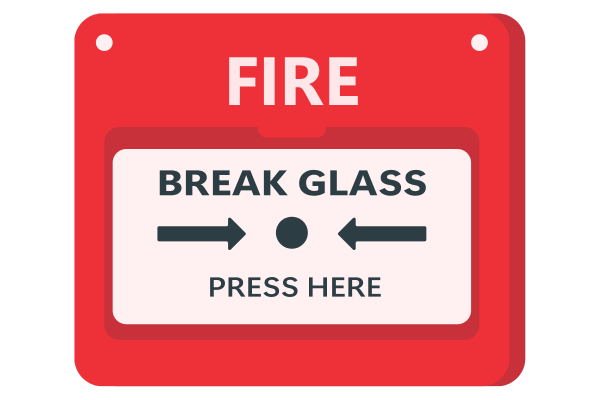
With the school closures, quarantines, and social distancing happening in many communities, we are seeing many businesses impacted by COVID-19 including some of our own customers. The impact is on the ability to operate, but even worse in terms of lost income. There is the concept of “breaking the glass” times of emergency as you would do with certain types of fire alarms. This article will cover when to break the glass with an emergency checklist of things to consider when deciding how to adapt your business to weather the financial storm we are experiencing.
Business Sales Affected, But Not In a Financial Crisis
Businesses only experiencing a moderate decline in sales and\or you have decent financial reserves have time to be thoughtful. Over the next few weeks, you need to evaluate and make some decisions to adjust to the new normal. There is a lot of analysis and decisions to make so we are going to walk through this process in a webinar series 6 Financial Actions For Business Survival During Economic Crisis:
- Webinar 1: “Business Financial Health Check” (March 25)
- Webinar 2: “Analyzing Business Cost Structures” (April 1)
- Webinar 3: “Cost Optimization Strategies ” (April 8)
- Webinar 4: “Optimizing Sales Costs (COGS)” (April 15)
- Webinar 5: “Cash Flow Management” (April 22)
- Webinar 6: “Using Your Financials to Identify Revenue Opportunities” (April 28)
The challenge is for businesses whose financial death is imminent. For that is a checklist you can go through now.
Business Sales Affected and at a Financial Breaking Point
You need to make quick decisions, if your business has lost significant or all revenue and has no financial reserves. Here is a checklist we are using with our customers.
1 – Is your business viable at a significantly reduced sales amount (50% down)?
Ask yourself this because sales may not rebound when restrictions lift. 50% may feel high, but better to plan for the worst.
- Determining viability:
- Can costs be cut drastically and critical business operations continue?
- Can debts be restructured
- Consider chapter 11 business bankruptcy as a vehicle to restructure debt
- If no, go to 2
- If yes, go to 3
2 – Protect the owner(s) from business failure
This is the worst-case scenario, but it may be necessary to limit damages
- Stop spending anything: bills, payroll, etc.
- Find a bankruptcy attorney
- Look at declaring chapter 7 business bankruptcy
Again, this is an ugly option, but you need to face reality if there is no hope of business continuity. Owners need to limit the damage to their personal finances.
3 – Cut costs immediately and as much as possible
- What spending is necessary to fulfill sales?
- Cost of Goods Sold
- Critical operating expenses
- Which vendors must be paid?
- Which vendors can be have extended terms?
- Start calling now
- Stop buying inventory and cancel or pause any orders that makes sense to cancel or pause
- Work with suppliers on terms and timing
- Can you furlough everyone? All but a few?
A lot of yuck here, but this is about survival and sustainability.
4 – Debt restructuring
- Talk to lenders about better terms
- Interest-only payments
- Longer payment terms
- Convert short term debt into long term debt
- Small Business Administration loans
- State or city programs
- Anything else the government comes up with – this is changing daily
- Consider chapter 11 bankruptcy if you can’t restructure your debt and your debt prevents you from moving forward
Better to pay over time than not pay at all.
5 – Bring in Cash from Accounts Receivable and Inventory
- Collect accounts receivable ASAP
- Consider factoring
- Consider early payment discounts
- Consider offering payment terms to keep cash flowing
- Weekly
- Monthly
- Convert inventory to cash
- Liquidate obsolete inventory
- Sales at discounts – Be careful to not create too low a price point for when sales demand returns
- Change how you invoice apply the same techniques from 5b
- Weekly or monthly terms
- Early payment discounts
There’s a lot to do here. Dig in and get to work.
6 – Long Term Planning
- How do you achieve profitability at lower sales levels?
- Simplify your offerings
- Drop your under-performing products or services
- Identify products / services that are high margin and difficult to fulfill or low margin and easy to fulfill and fix the bad part of the equation
- Channel consolidation
- Focus on the most profitable channels
- Dump the others
Every crisis comes to an end. It may take time, but they do end and you need to adjust to crisis and post-crisis levels.
Final Thoughts
This is a difficult workflow to go through, but necessary. If your business is on the verge of financial failure, take these steps, take them seriously, and do what you need to do to survive.


